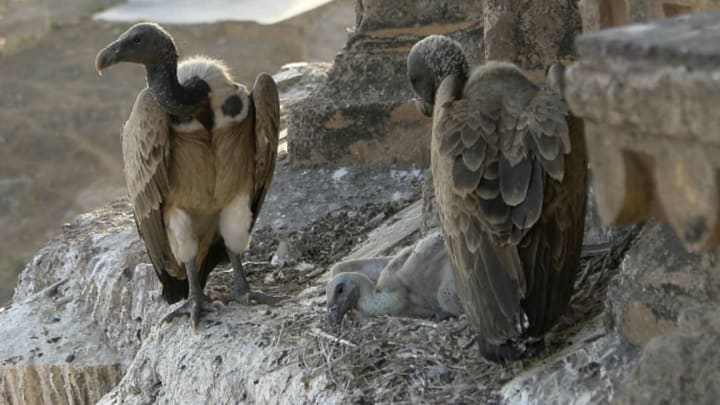Conservationists have been known to attempt some pretty weird tricks to save endangered species. Now, one vulture conservation program hopes to start spying on the birds using electronic eggs stuffed with sensors.
Vultures may not be conventionally beautiful, but they’re incredibly important. As scavengers, they dispose of carcasses that could otherwise harbor and spread disease. Unfortunately, more than half of all vulture species are endangered or nearly extinct. The critically endangered Indian vulture (Gyps indicus) lost more than 97 percent of its population in 15 years as more and more of its food supply became contaminated with veterinary drugs. There’s no question that vultures are in crisis. For conservationists, the question is “What can we do?”
Rather than starting from scratch, scientists at the International Centre of Birds of Prey (ICBP) decided to build on other conservationists’ ideas. Two zoos in the United States had previously used fake eggs to monitor their residents in order to learn how to best care for and protect them. But these projects took place in 2004 and 2007, and while the zoos were able to successfully build the egg monitors, they didn’t have the technology to make use of the data they collected, and the programs fell by the wayside.
The technology has since improved greatly. To make sure they got it right, ICBP members sent their prototype to innovators at Microduino, a company that prides itself on easy-to-use microprocessors and innovative solutions. Microduino CEO Bin Feng liked the idea, but thought his team could improve on the egg itself.
It was an unusual puzzle; the engineers had to create an egg that could be self-sufficient (since human intervention would spook the vultures) but still look exactly like a real vulture egg. The conservationists knew that the birds would destroy anything that looked even a little bit fake. Powering the machinery in the egg presented another problem.
“The battery life has to be 70 days,” Feng told Smithsonian. "The incubation process takes 40 to 60 days, and we need to put the electronic egg in the nest when the mother vulture is away so we don’t disturb them. We need to have a week before and after for data collection. The power consumption of the whole system is really challenging.”
“The device had to look and feel right to the mother vulture,” a team member noted on the Microduino blog, “while still being able to withstand the elements and other physical stresses it might encounter. Most importantly, it had to protect its delicate electronic ‘yolk.’”
After a great deal of trial and error, the team eventually produced an egg they could be proud of: a smooth nylon shell concealing instruments that can measure movement, barometric pressure, temperature, and humidity, as well as a Bluetooth transmitter to link the egg’s readings to a data-relay terminal and weather station.
“We’re really proud that we’re using Internet of things systems while giving Mother Nature a helping hand in the process,” Feng told Smithsonian. "If it’s successful, we can transfer the technology to other species.”
The high-tech vulture eggs were turned over to ICBP, who now have the unenviable task of sneaking the fakes into real nests when vulture parents aren’t looking.
